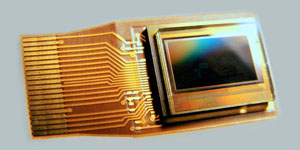 We've got some new info on CMEL's 7.6" AMOLED. And we also have photo...
We've got some new info on CMEL's 7.6" AMOLED. And we also have photo...
The panel is 7.6 800 x 480 Active Matrix OLED. It boasts a temperature independent response time of less than 50us across its entire operating temperature range. The module’s contrast ratio is better than 10000:1 and is not affected by viewing angle limitations. The emissive nature of the AMOLED panel does not suffer from gray scale inversion as TFT-LCD technology often does.
The module has a LVDS display data interface and a SPI control interface. It has overall dimensions 177.30mm (W) x 118.32mm (H) x 5.6mm (D) with an. active area of 165.60mm (W) x 99.36mm (H).
If you're interested in this module, contact us for details and costs
 Sony says that they are 'investing heavily' in OLEDs - but only on OLED TVs. They are not interested in making smaller sized OLED displays. They say OLEDs have great performance, and are energy saving, too.
Sony says that they are 'investing heavily' in OLEDs - but only on OLED TVs. They are not interested in making smaller sized OLED displays. They say OLEDs have great performance, and are energy saving, too.








